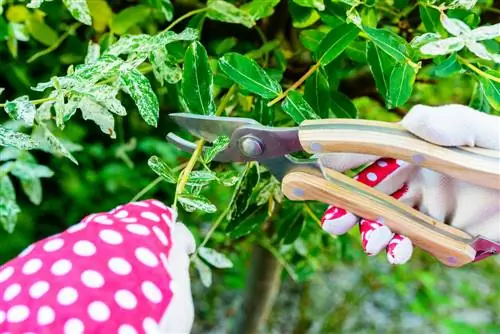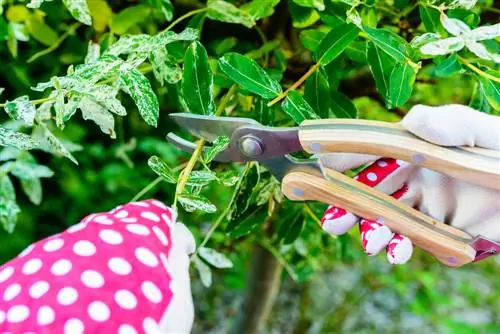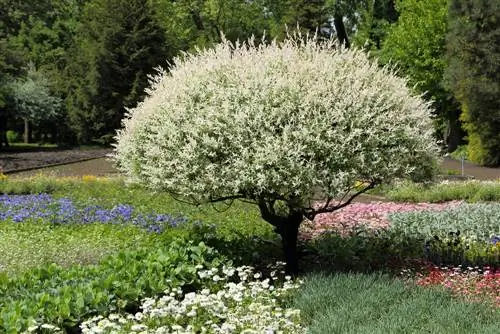- Author admin [email protected].
- Public 2023-12-16 16:46.
- Last modified 2025-01-23 11:21.
For gardeners who really enjoy using secateurs, the harlequin willow is probably the most suitable plant of all. Thanks to the high cutting tolerance, everything is possible, from a delicate shape cut to a radical cut. Regular shortening is absolutely necessary so that the ornamental willow maintains its beautiful appearance and produces the typical pink flowers after new growth.

When and how do I carry out a radical cut on a harlequin willow?
The best time to radically cut the harlequin willow is in spring. For shrubs, cut to a few centimeters above the ground, while for tall trunks, shoots should be shortened to a maximum of ten centimeters without damaging the grafting area.
Time
The best time to radically cut the harlequin willow is spring. If you cut back your willow radically at this time of year, the ornamental shrub will reward you with lush flowers just a few months later. In the summer months only topiary cuts should be carried out. Under no circumstances should you make a radical cut in the fall. The risk of ground frost increases the risk that your pruned harlequin willow will not survive the winter. A radical intervention at this time makes the interfaces heal more difficult and makes Salix Integra susceptible to frost. Choose a cloudy, frost-free day for the radical cut.
What you need to consider
The Harlequin willow comes either in shrub form or as a standard tree. Both variants require some rules for radical cutting:
Harlequin willow as a shrub
- You can shorten your harlequin willow as a shrub to a few centimeters above the ground.
- This is followed by rapid budding.
- The radical cut promotes growth.
- This also saves you the hassle of cutting out individual, bare branches.
Harlequin willow as a standard stem
Harlequin willow in the form of a standard trunk is often refined. Under no circumstances should you cut into the finishing area. This way you would cause massive damage to the Harlequin Willow.
- Short the shoots to a maximum of ten centimeters.
- There should be at least four pairs of eyes on a shoot.
- Place the scissors directly above the eye.
- You should completely remove diseased and dried shoots.
- You should also thin the crown by removing cross-growing branches that disrupt the appearance.
- Do not leave stubs at the base.
Alternatives to the radical cut
Harlequin willows are also popular hedge plants as a shrub form. In this case, a radical cut would not be effective. However, regular shortening of the branches is essential. In this case, it is sufficient to cut the plant back by two thirds every two years.






